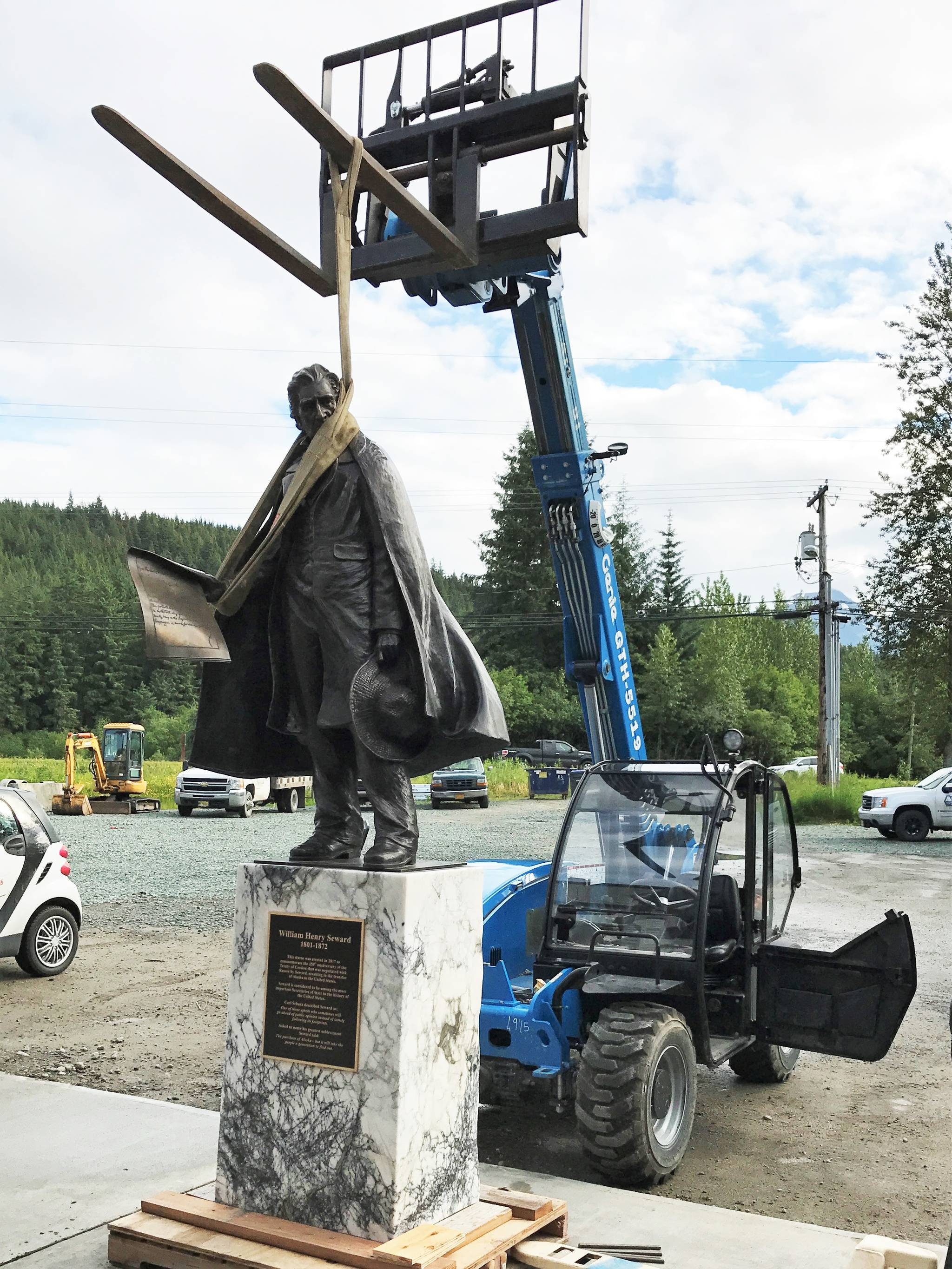After a journey that took three years, 4,500 miles and $250,000, the statue of Secretary William Henry Seward is just days away from being installed in downtown Juneau.
The statue commemorates the 150th anniversary of the Treaty of Cession that made Alaska a U.S. territory, and arrived in Juneau a few weeks ago. Prior to that, the statue traveled from Seward’s longtime home in New York, through Nebraska and up to Juneau.
Wayne Jensen, the co-chair of the Seward Statue Committee, said that early next week, the statue will be put in place at the Dimond Courthouse Plaza in front of the Alaska State Capitol. The public ceremony for the unveiling will take place at 3 p.m. July 3.
On Thursday morning, the contractors who are working with the statue took it through a “trial run,” as Jensen called it. They lowered the statue onto its marble base, and after years of working to make this statue a reality, Jensen was more than a little nervous.
“We wanted to make sure before we put it down in the courthouse plaza that it was gonna fit,” Jensen said. “They were very careful lowering it down. Fortunately, I wasn’t there. I got there just after it was set, otherwise it would have probably been a little nerve-wracking.”
[Preserving a scar: Seward statue debate exposes differing views on history]
While speaking at the Chamber of Commerce luncheon Thursday, Jensen also said the statue is now fully funded. The project ended up costing $250,000, Jensen said, with about three-quarters of it coming from donations and grants. The other quarter has come in the form of in-kind donations, with people donating their time or services or donating items to auction off to raise money for the project.
Co-Chair of the Seward Statue Committee Mary Becker said the largest donation came from the Alaska Historical Commission (part of the Alaska Department of Natural Resources), in the form of two grants totaling about $28,000. Those grants were set aside specifically for projects relating to the sesquicentennial (the 150th anniversary of the Treaty of Cession), Jensen said.
The second-largest donation came from the City and Borough of Juneau, which donated $25,000 to the project in 2015. The money came from the Parks and Recreation Department’s budget.
The final major donation that recently came through was a $25,000 grant from the Rasmuson Foundation. While there were these larger, corporate donations and grants, there were also numerous private donations from citizens in town who wanted to see the statue go up. Becker said she was a bit nervous at first that they would be able to raise enough money, she quickly saw that the statue was popular enough to get people to open up their wallets.
There’s still one more chance for people to give money to the project, as the committee is selling paintings from artist David Rubin (who designed the statue along with his sister Judith). The paintings depict Seward and the statue, and Becker hopes that people will buy the paintings and then donate them to the Juneau-Douglas City Museum.
The City Museum has helped out with creating a plaque to accompany the statue that explains Seward’s significance to Alaska’s history. Jensen has learned quite a bit about Seward’s role in the treaty and the formation of the state, even including his influence on the state’s name.
“You can kind of see how important he is to us who now call ourselves Alaskans,” Jensen said. “It probably wouldn’t have even been called Alaska. Hopefully it wouldn’t have still been Russian America, but it might have been something else.”
Know &Go
What: The unveiling ceremony for the William Henry Seward Statue
Where: Dimond Courthouse Plaza
When: 3 p.m. July 3
• Contact reporter Alex McCarthy at alex.mccarthy@juneauempire.com.

